Care
The best thing you can do for your copperware is wipe it with a dry cloth.
Copperware is meant to be used.
Whether you steep tea, boil water, enjoy a refreshing drink,
or arrange flowers, your copperware will appreciate a quick
wipe from time to time. As time passes, it will reward you with a lustrous surface and deepened colour.
Borrowing the words from our most experienced artsians,
“the most beautiful copperware is copperware that has been used and enjoyed.”
We invite you to enjoy its delicate hues and watch
how the colour changes through the years.
Teapot

- First Time Use
Rinse with warm water and dry thoroughly with a dry cloth or paper towel.
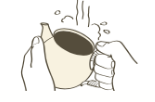
- Steeping
After adding hot water, the teapot will immediately become very hot. Take care not to touch the copper directly.
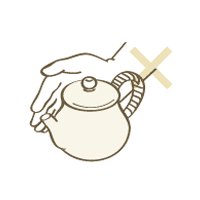
We recommend using a teapot stand to prevent heat damage to your tabletop.
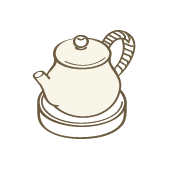
Do not attempt to heat your teapot inside a microwave or toaster oven as this will result in damage to the teapot and could cause fire.
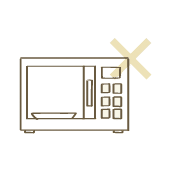
- After Use
Dispose of the tea leaves and rinse well with warm water. To remove dirt or oil, use a light dish soap and soft sponge. After rinsing, ensure there is no moisture left on the outside by wiping the surface dry.
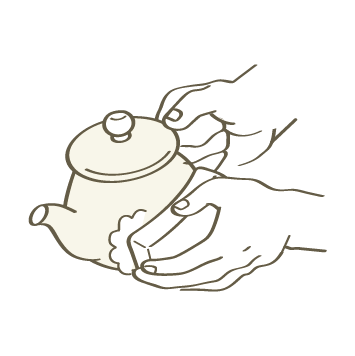
With frequent use, the inside of the teapot will eventually stain. Over time, tannins can build up and even block the flow of tea in some teapot types. Ensuring to rinse the used leaves at the end of the day will slow this process.
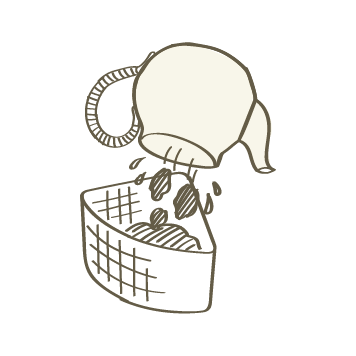
It’s not necessary to wipe the inside dry after every use. By doing so, however, you can help keep the tin layer’s shine longer.
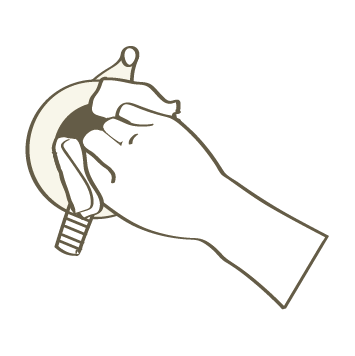
Some of our handles are dyed. Leaving it to air dry may cause the colour to bleed into the fabric. Instead, wipe it well after rinsing.
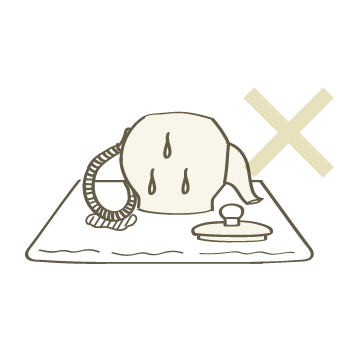
Store in a dry place. Particuarly if you expect you may not use it for a while. Leaving it out in a humid environment may create verdigris (green patina) and uneven colour change on the surface.
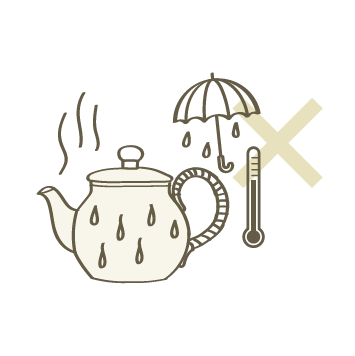
- Points of Caution
The surface of the copperware is oxidized to create a fine layer of colour that will continue to oxidize and change over time. Consider the following to protect the coloured surface.
Avoid strong cleansers, melamine sponges, or scrubbing brushes.
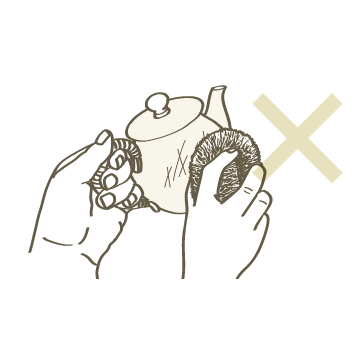
Friction between the countertop and base of the teapot may remove some of the colouring over time. A trivet, pot mat, or teapot stand can help to prevent this.
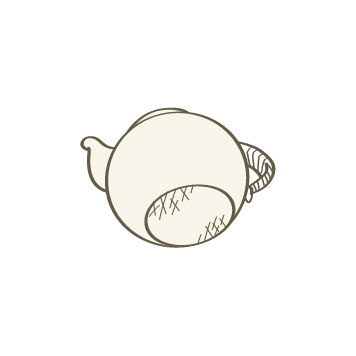
Do not use chlorine-based detergents.
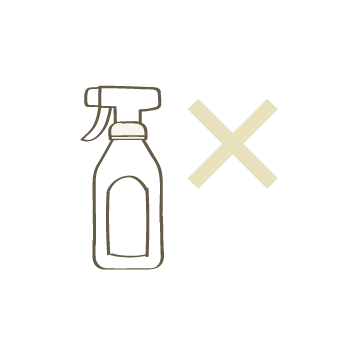
Do not use a dishwasher or drying machine.

Avoid direct and prolonged contact with salty or acidic food and drink.
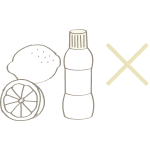
Canister

- Proper Use and Points of Caution
You should avoid washing the canister under the tap. There are gaps between the outside and inside cylinders and water that seeps into the gaps will cause verdigris (green oxidization) to form.
…
The canister is ready to use out of the box.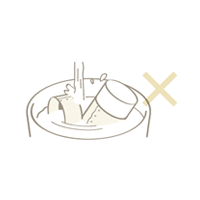
When closing the outside lid of the canister, be sure to line up the bolts. Returning the lid incorrectly could cause excess damage to the inside or cause the outer lid to not fit properly over time. In some cases, it could become stuck and unremovable.
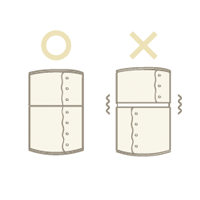
The inner lid and inner cylinder of the canister are copper plated with silver. This plating reduces odor, and keeps tea stored inside fresh and free of bacteria. Handling this area directly, however, may cause it to oxidize and change colour more quickly.
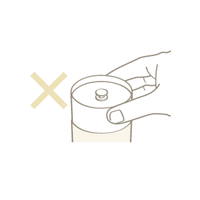
Use a dry towel or cloth to wipe down the top and sides of the canister. Over time, this will add luster to the surface and help the colour deepen.
…
If you are using your caddy with wet or oily hands be sure to immediately wipe your caddy clean using a clean dry cloth or towel to protect the surface. Salty or vinegary foods and drinks can damage the coloured surface if left there, so please take care when handling these things around your copperware.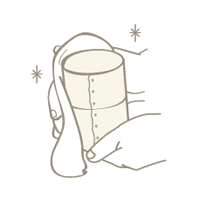
Kettle


- First Time Use
Rinse the kettle with warm water and dry it thoroughly.
- Boiling
Water Level
Refrain from filling the kettle to the very brim as this may cause water to shoot out upon boiling.
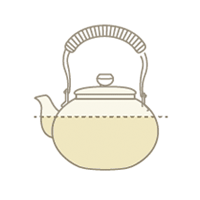
Positioning
For gas stoves, be sure to place the kettle squarely on the element and ensure the handle is resting straight up or on the side of the stopper. The handle may burn if it falls to the side.
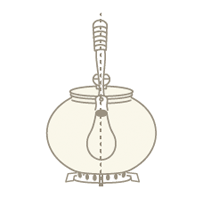
Element
Adjust the element such that the flame does not envelop the sides of the kettle. Boiling with a smaller flame will help limit drastic colour change and potential heat damage.
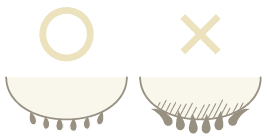
- Heating
As the water comes to a boil, the body of the kettle will become very hot. Take care as steam from the hole in the lid and spout can scald.
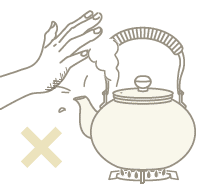
Ensure the lid is closed. Take care when removing the lid immediately after boiling as hot steam will billow upwards.
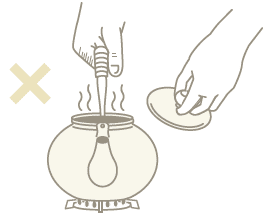
Take your time pouring immediately after boiling as hot water may jump and splash out from the spout. Have a hand on the knob to ensure the lid does not fall.
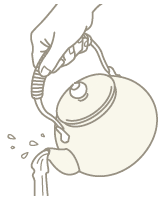
Keep out of reach of children.
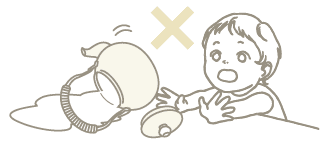
- After Use
To remove oil or dirt, use a light dish soap and soft sponge. Rinse and dry well.
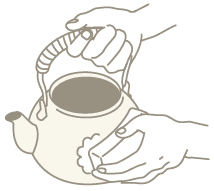
It’s not necessary to empty the kettle after each use; extra water can be left inside for next time.
…
As the kettle is used, the tin on the inside will start to darken. This is caused by a reaction to the minerals in the water. We recommend embracing this change as it has no ill effects on the water’s taste or quality. If you’re bothered by this, however, please contact us for more information.
※ The reaction of the tin may be more drastic depending on where you live and the hardness (mineral content) of the water.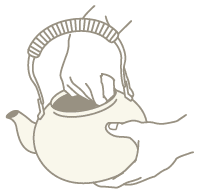
The vine wrapped around the handle is a natural material. We recommend soaking it from time to time to keep it strong. It may be prone to cracking if left too dry.
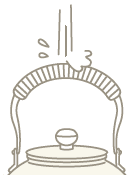
To store for longer periods, wipe it to remove any moisture and store it in a cool, dry place. Leaving it in a humid environment may cause verdigris (green oxidization) and excess colour change on the surface.
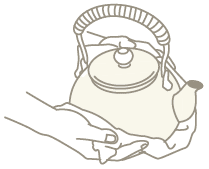
- Points of Caution
The surface of the copperware is oxidized to create a fine layer of colour that will continue to oxidize and change over time. The following can have an adverse effect on and even strip the piece of its coloured surface.
Strong cleansers, melamine sponges, or scrubbing brushes
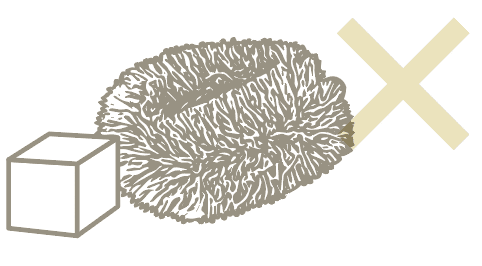
Dishwashers or drying machines
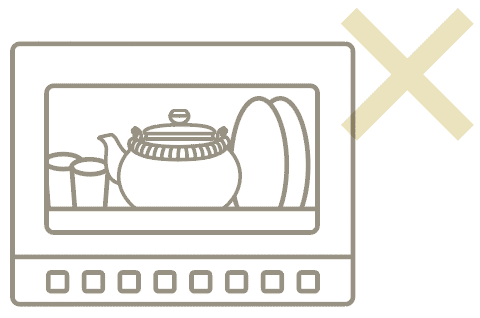
Bleaching agents (chlorine or oxygen-based) or other strong cleansers
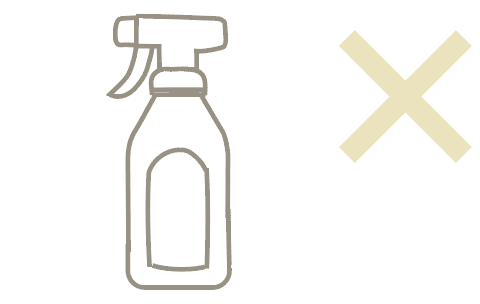
Direct and prolonged contact with salty or acidic food and drink

Cups & Stemware

- Proper Use
Our vessels are best used with cold drinks. Hot liquids have the potential to scald.
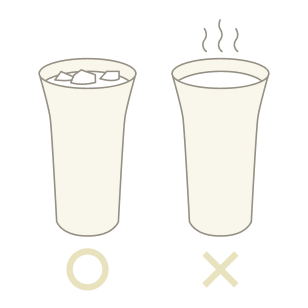
When using your vessel with cold drinks in a warm place, the moisture will build up on the outside. Use a cloth or other absorbent base to protect your table from water marks.
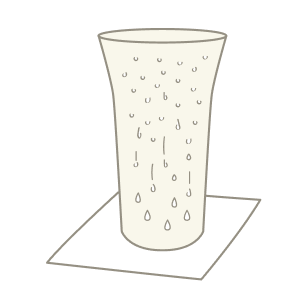
- Maintenance
After use, use warm water to wash your vessel and wipe the surface dry. If you expect you will not use it for a long time, wipe it extra well and store it in a dry place free of humidity.
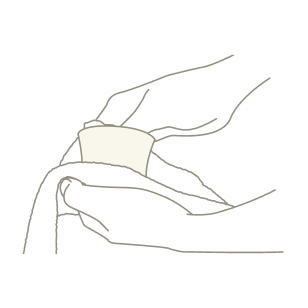
As you use your vessel, the inside may darken or develop black spots but it is safe to continue to use. If you wish to slow the development of this change in colour, wipe the inside well before putting it away. For reference, the black spots develop from the metal ions attaching to the surface material. It is not dangerous or hazardous to human health.
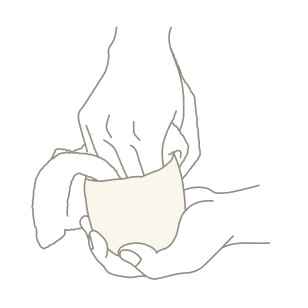
An ordinary dish soap can be used to remove oils, salty, or acidic food from the surface of your copperware.
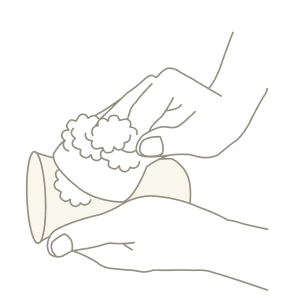
- Points of Caution
The surface of the copperware is oxidized to create a fine layer of colour that will continue to oxidize and change over time. The following can have an adverse effect on and even strip the piece of its coloured surface.
Strong cleansers, melamine sponges, or scrubbing brushes
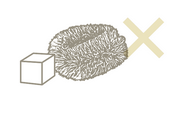
Dishwashers or drying machines
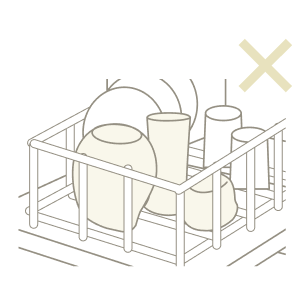
Bleaching agents (chlorine or oxygen-based) or other strong cleansers
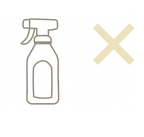
Direct and prolonged contact with salty or acidic food and drink

Coffee Pot 900ml


- First Time Use
Rinse the coffee pot with warm water and dry it thoroughly.
- Boiling
Water Level
Refrain from filling the pot to the very brim as this may cause water to shoot out upon boiling.
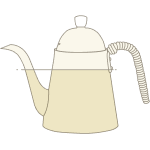
Positioning
Close the lid ensuring the steam hole is facing forwards the spout. Once closed, pull up lightly to ensure it is locked in place. If the steam hole is facing toward the handle, the steam released can potentially scald.
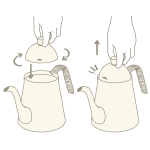
For gas stoves, be sure to place the pot squarely on the element. If the handle is placed too close to the element it has the potential to burn or become damaged.
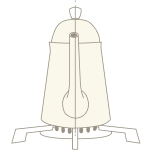
Element
Adjust the element such that the flame does not envelop the sides of the pot. Boiling with a smaller flame will help limit drastic colour change and potential heat damage.
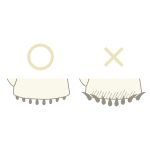
- Element
Do not leave your pot unattended. If left to boil with little or no water it may result in drastic colour change or burn marks. In extreme cases could also damage the handle’s vine wrap and cause a leaky spout.
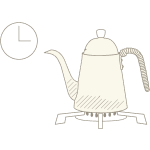
As the water comes to a boil the body of the pot will become very hot. Take care as steam from the hole in the lid and spout can scald.
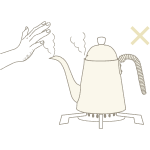
Take your time pouring immediately after boiling as hot water may jump and splash out from the spout.
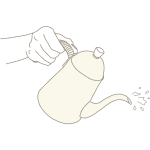
Keep out of reach of children.
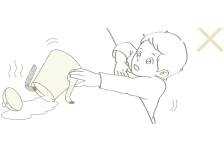
- After Use
It’s not necessary to empty the pot after each use; extra water can be left inside for next time.
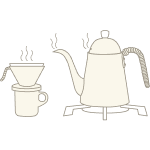
To remove dirt or oil use an ordinary dish soap and scrub lightly with a soft sponge. Rinse and dry the outside surface thoroughly. It’s not necessary to completely dry the inside.
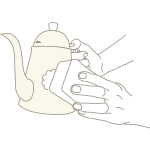
The vine wrapped around the handle is a natural material. Allow it to get wet from time to time as water helps to keep it strong. It may be prone to cracking if left too dry.
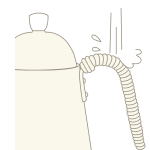
If you intend not to used your pot for a long period of time dry it well and and store it in a dry place. If kept in a humid place this could result in unexpected colour change or development of verdigris on the surface.
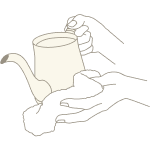
- Points of Caution
The surface of the copperware is oxidized to create a fine layer of colour that will continue to oxidize and change over time. The following can have an adverse effect on and even strip the piece of its coloured surface.
Strong cleansers melamine sponges or scrubbing brushes
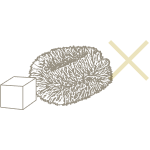
Dishwashers or drying machines
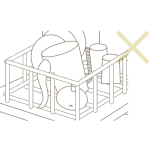
Bleaching agents (chlorine or oxygen-based) or strong cleansors
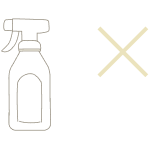
Direct and prolonged contact with salty or acidic food and drink

Questions?
If you’re looking for more information about how to use
or take care of our copperware,
don’t hesitate to contact us.